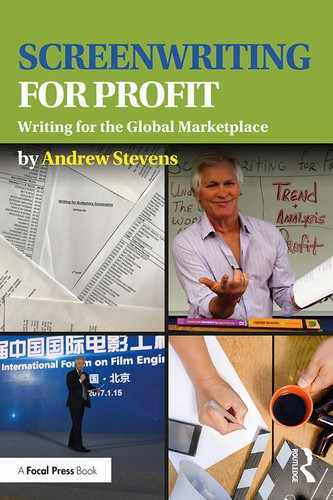Prologue
Everything in life is perspective. When it comes to screenwriting, there are so many different perspectives that it’s difficult to weed through the many “gurus” who all seemingly have the answer to the perfect story and screenplay, to discern what resonates with us individually and which philosophy or model works for us as we develop an idea into a story and a story into a screenplay.
With the prevalence of the Internet, and Google being both a noun and a verb, anyone can “Google” and readily see that there are allegedly only seven basic plots (www.easywaytowrite.com) when it comes to developing stories. However, another site will reference seventeen (www.fiction-writers-mentor.com), another will reference thirty-six (www.ipl.org), while others claim three, ten, thirty-one, and various numbers in between. There are many wonderful and knowledgeable screenwriting teachers who harp on story structure, while others stress the foundations of screenwriting and the structure of the screenplay, while still others are more focused on act structure, character arcs, plot twists, archetypes, and mythologies.
In today’s educational world regarding screenwriting, aspiring writers encounter repackaged new vernacular and terminologies for creative writing elements that are age old. Many actors, directors, producers, and other various artistic personnel who work in film often fixate on creative and esoteric elements, which, if part of a global understanding of how screenplays are developed into movies, is not a bad thing. However, in my more than forty years of experience in the motion picture and television industry, it is my fervent belief that there are distinctly different sets of elements and understandings about writing screenplays that must coincide and be adhered to in order to complement and make the structural side of screen-writing a success. With this knowledge, we then transform an idea to the written page and in turn, into a script that may actually be read, optioned, sold, and most importantly made into a motion picture.
Not including television, I’m fortunate enough to have made over 175 motion pictures as producer; many as a storywriter, screenwriter, and director; and I have performed almost every function imaginable in every facet of the development, sales, financing, production, post-production, delivery, and servicing of these motion pictures. All of these other areas of expertise would not initially seem to be creative by a writer, or necessarily applicable to screenwriting, but they have all collectively become an invaluable asset and have given me a broader spectrum of knowledge for me to be able to develop a unique paradigm and apply it to screenwriting. Knowledge is power, and inside knowledge can be the difference between screenwriting as a pastime and screenwriting as an occupation.
How to Read This Book
To many it may seem that I begin this book at the point that would logically be the end result of the writing process, the film markets where movies are sold. However, the order in which I present information is intentional, since my paradigm is based on the buyers for whom writers who actually have their screenplays made into films are writing, as we will explore in detail.
Bear with the structure, as this book does not espouse a new structural model, as the market is glutted with them. It does offer many unique and practical screenwriting tips, and real-world knowledge that demystifies the fantasy about the screenwriting process and how movies are really made as well as how screenwriters can write films that will sell, rather than falter.
If a screenwriter is informed on what criteria give him or her the best opportunity to sell a screenplay, based on the most current market trends, he or she is most likely destined for success rather than futility and failure. I will offer some case studies as illustrations, but my main goal is to reveal how the business works, how decisions are made, and allow screenwriters insights into how to give their creative work the best possible opportunity for making a creative vocation a career, rather than a hobby.
